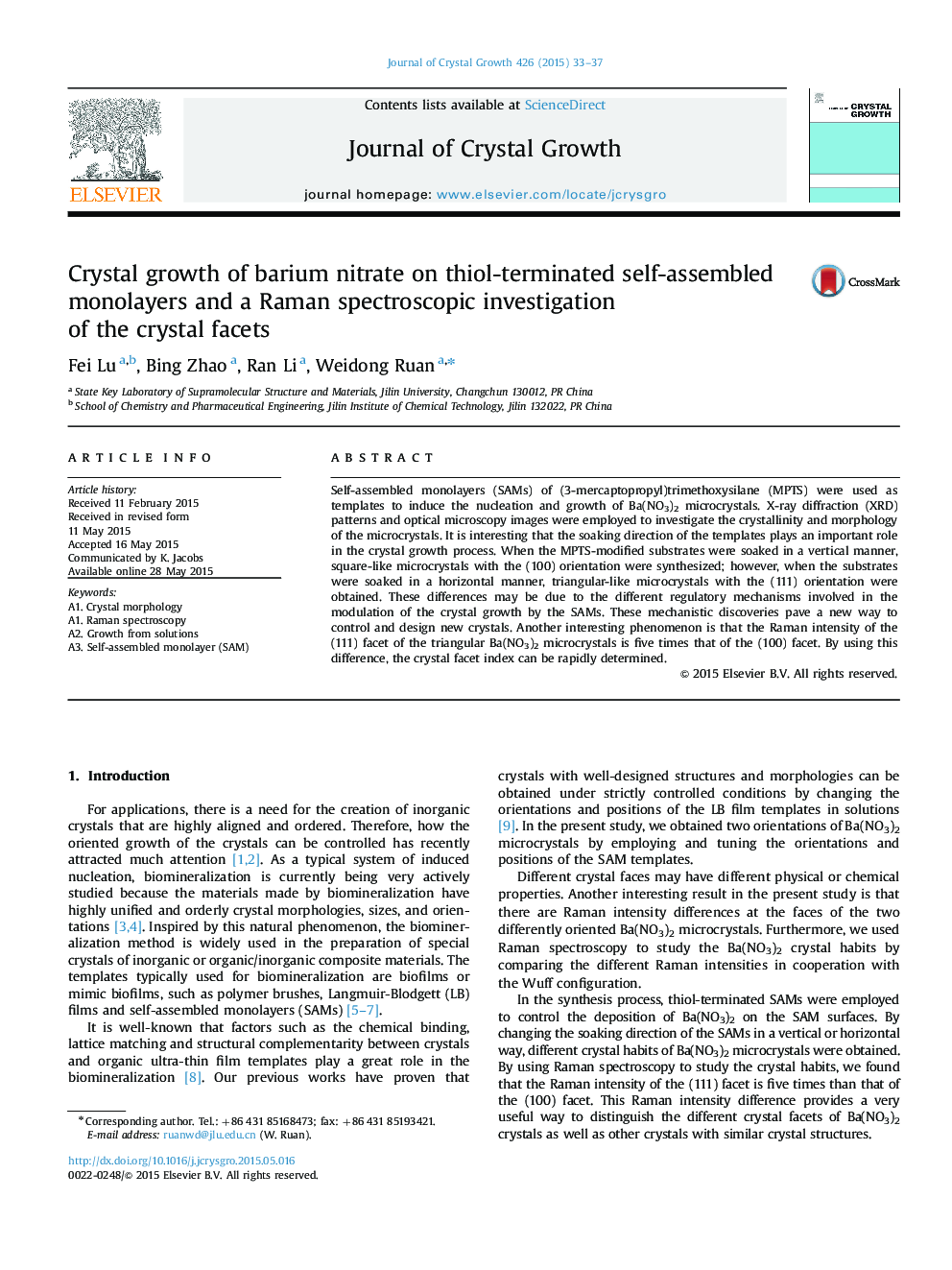| Article ID | Journal | Published Year | Pages | File Type |
|---|---|---|---|---|
| 1789907 | Journal of Crystal Growth | 2015 | 5 Pages |
Abstract
Self-assembled monolayers (SAMs) of (3-mercaptopropyl)trimethoxysilane (MPTS) were used as templates to induce the nucleation and growth of Ba(NO3)2 microcrystals. X-ray diffraction (XRD) patterns and optical microscopy images were employed to investigate the crystallinity and morphology of the microcrystals. It is interesting that the soaking direction of the templates plays an important role in the crystal growth process. When the MPTS-modified substrates were soaked in a vertical manner, square-like microcrystals with the (100) orientation were synthesized; however, when the substrates were soaked in a horizontal manner, triangular-like microcrystals with the (111) orientation were obtained. These differences may be due to the different regulatory mechanisms involved in the modulation of the crystal growth by the SAMs. These mechanistic discoveries pave a new way to control and design new crystals. Another interesting phenomenon is that the Raman intensity of the (111) facet of the triangular Ba(NO3)2 microcrystals is five times that of the (100) facet. By using this difference, the crystal facet index can be rapidly determined.
Related Topics
Physical Sciences and Engineering
Physics and Astronomy
Condensed Matter Physics
Authors
Fei Lu, Bing Zhao, Ran Li, Weidong Ruan,
